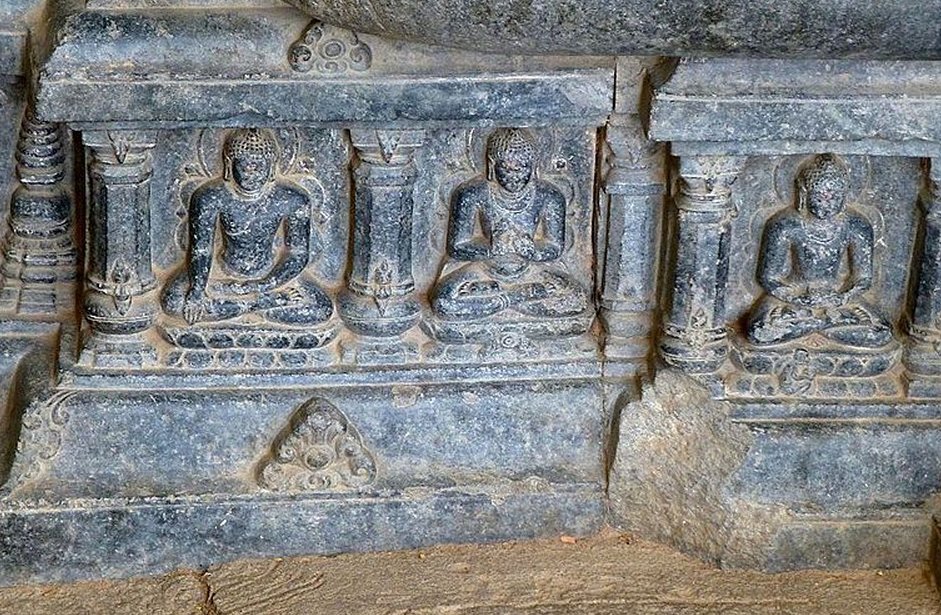Barabar Caves: The Oldest Surviving Rock-Cut Caves With Acoustic Effects In India
A. Sutherland - AncientPages.com - The Barabar Caves are considered the oldest surviving rock-cut caves in India. Mostly dated to the Maurya Empire (322-185 BC), they were carved out of huge, hard granite rock.
The surfaces of caves are not only remarkably polished and beautiful but also enhance every sound inside the caves.
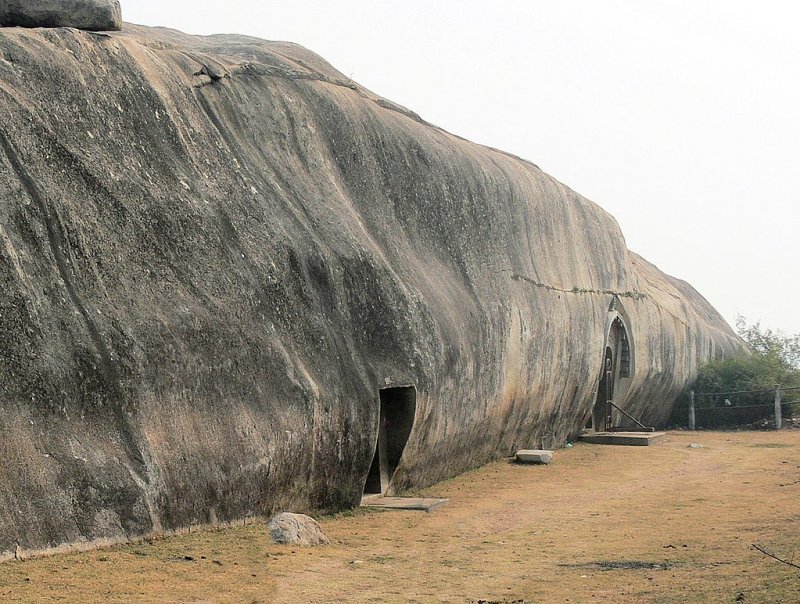 Entrances of Sudama Cave, and further, Lomas Rishi Cave, Barabar Hill. Image credit: Klaus-Norbert - CC BY 3.0
Entrances of Sudama Cave, and further, Lomas Rishi Cave, Barabar Hill. Image credit: Klaus-Norbert - CC BY 3.0
Sir John Hubert Marshall (1876-1958), who oversaw the excavations of Harappa and Mohenjodaro, two of the main cities that comprise the Indus Valley Civilization, wrote about the Mauryan sculpture:
"extraordinary precision and accuracy which characterizes all Mauryan works, and which has never, we venture to say, been surpassed even by the finest workmanship on Athenian buildings."
There are seven caves in all and are dated at least two thousand five hundred years old. They are a mysterious and fascinating place mainly due to a remarkable combination of high polish finish and incredible echo effects generated within the caves.
The caves are situated in the twin hills of Barabar (four shelters). Three others - Nagarjuna Caves are in the 1.6 km distant Nagarjuna Hill, among the rock-strewn ridges of Jahanabad, Bihar, India.
Glass-Like Smoothness And High Perfection Of Skilled Builders
Barabar Caves is an important archaeological site. Carved out from solid rocks, the caves bear details of the life of Buddha.
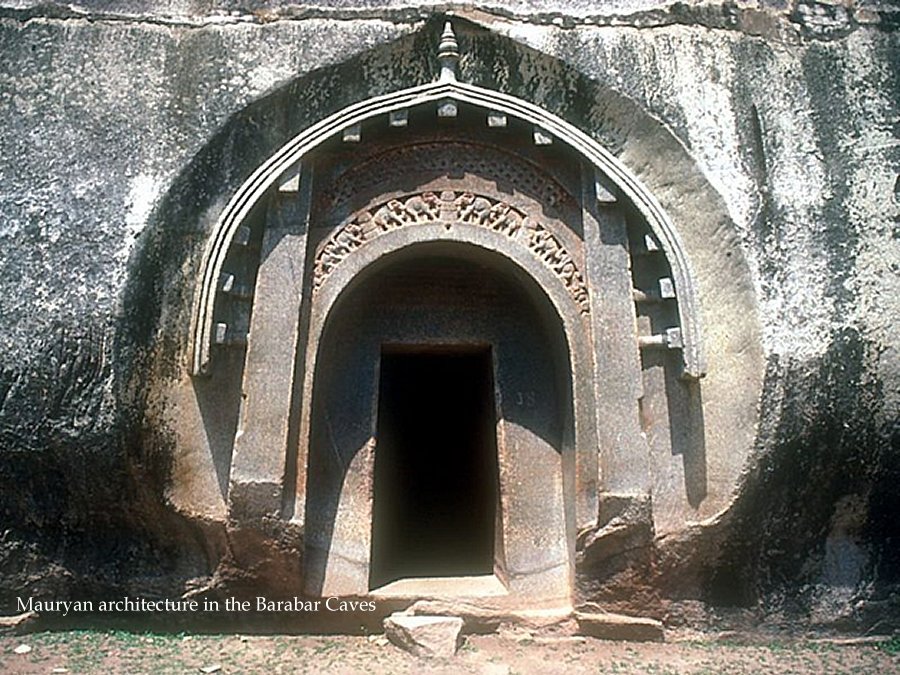 Mauryan architecture in the Barabar Mounts. Grotto of Lomas Rishi. 3rd century BC. Image credit: Photo Dharma from Penang, Malaysia - CC BY 2.0
Mauryan architecture in the Barabar Mounts. Grotto of Lomas Rishi. 3rd century BC. Image credit: Photo Dharma from Penang, Malaysia - CC BY 2.0
Most Barabar caves consist of two rooms, cut out of granite, with perfectly chiseled and polished inner surfaces, resulting in high perfection glass-like smoothness. The impression is imposing because rock boulders outside the cave are rough and irregular.
The technology and design of the Barabar caves have features such as inclining walls, rounded roofs, and lustrous inner surfaces, which we can characterize as mirror-like in their fantastic effect.
Their acoustics is also masterwork; the surfaces are remarkably polished and beautiful and enhance every sound inside the caves!
They give an impression as if they are cut with a laser. Building technical knowledge and skills of ancient creators are recognizable and remarkable because this work was done over 2,200 years ago.
Ajivika Ascetics Were Portrayed As 'Charlatans'
One of the caves belonged to Buddhists, and at least two others were associated with Ajivika.
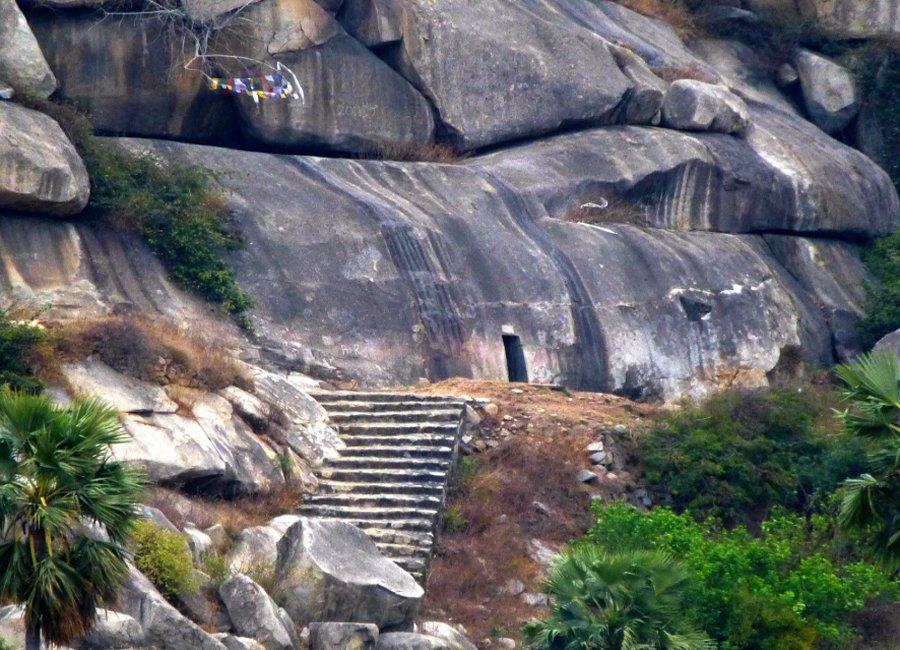
Staircase and Cave Entrance of the Gopika cave, at Barabar, Bihar. Image credit: Anandajoti - CC BY 2.0
This ascetic sect emerged in India about the same time as Buddhism and Jainism and lasted until the 14th century.
The caves were carved out of granite, then finished with a polishing of the inner surface, giving a perfect mirror effect of great regularity. An additional feature of the Barabar Caves is an echo effect.
The first room, a large rectangular hall, was used for gatherings of worshippers, and the second, a smaller, round, and domed - for worship. At the site, there are several rock-cut Buddhist and Hindu sculptures. Some caves have decorations in the form of Ashokan inscriptions. Ashoka the Great was an Indian emperor of the Maurya Dynasty who ruled almost all of the Indian subcontinent from c. 268 to 232 BC
Three Nagarjuna Caves - the Vadathika, the Vapiyaka, and the Gopi - are smaller and younger than Barabar caves. They can be found on and around Nagarjuna Hill. The biggest of them is the Gopi, decorated with inscriptions found within and above the doorway.
Buddha Statue Base at Barabar, Bihar, India. Image credit: Photo Dharma - CC BY 2.0
All the three Nagarjuna caves, with the same glass-like finish on the rock surfaces, testify to the technical skills of India's builders and the high quality of their equipment.
The text refers to the cave excavation in 214 BC, when King Dasaratha, the grandson of Ashoka ruler (273–232 BC), ascended the throne and donated the Nagarjuna caves to the Ajivikas, the lost Ajivika sect. This sect - to the 5th century BC - once competed with Buddhism and Jainism for influence, only to lose out and get wiped off.
Today, everything, including the texts of their faith, has been lost.
There is some knowledge about Ajivikas' history and philosophy, but it originates from secondary sources, mainly the ancient and medieval texts of India, especially the Buddhist and Jain sources.
The Ajivikas have been portrayed as 'Charlatans,' and their beliefs are trashed. We know they were fatalistic, and their central belief was 'Niyati' or Fate. They sincerely believed in fate. There was no free will; everything that has happened, is happening, and will happen is entirely preordained, and nothing could change it.
Updated on June 22, 2022
Written by A. Sutherland - AncientPages.com Senior Staff Writer
Copyright © AncientPages.com All rights reserved. This material may not be published, broadcast, rewritten or redistributed in whole or part without the express written permission of AncientPages.com
Expand for referencesC.P.R. Environmental Education Centre, Chennai
N. Lahiri, Ashoka in Ancient India
More From Ancient Pages
-
 Hayk – Legendary Patriarch And Founder Of Armenia Who Defeated King Bel Of Babylon
Featured Stories | Feb 10, 2022
Hayk – Legendary Patriarch And Founder Of Armenia Who Defeated King Bel Of Babylon
Featured Stories | Feb 10, 2022 -
 5000-Year-Old Cold Case: Neolithic Fisherman Died By Drowning – Forensic Study Shows
Archaeology | Feb 14, 2022
5000-Year-Old Cold Case: Neolithic Fisherman Died By Drowning – Forensic Study Shows
Archaeology | Feb 14, 2022 -
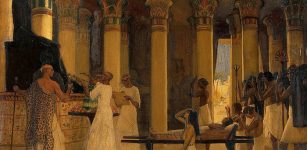 Egyptians Mastered Medicine Thousands Of Years Ago
Civilizations | Oct 1, 2015
Egyptians Mastered Medicine Thousands Of Years Ago
Civilizations | Oct 1, 2015 -
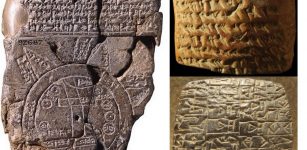 Cuneiform Tablets: One Of The Earliest Systems Of Writing Invented By The Sumerians
Civilizations | May 8, 2017
Cuneiform Tablets: One Of The Earliest Systems Of Writing Invented By The Sumerians
Civilizations | May 8, 2017 -
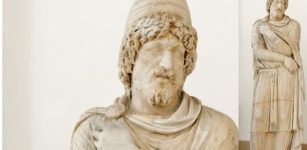 Barbarians Were People Who Didn’t Speak Greek
Ancient History Facts | Jan 18, 2016
Barbarians Were People Who Didn’t Speak Greek
Ancient History Facts | Jan 18, 2016 -
 Magnificent Ancient Treasure Discovered In Crimea – But Who Does It Belong To?
Archaeology | Dec 10, 2024
Magnificent Ancient Treasure Discovered In Crimea – But Who Does It Belong To?
Archaeology | Dec 10, 2024 -
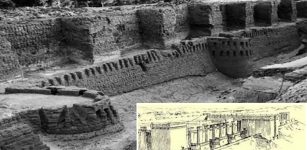 Massive Fortress Buhen In Ancient Capital Of Egyptian Nubia
Archaeology | Mar 20, 2017
Massive Fortress Buhen In Ancient Capital Of Egyptian Nubia
Archaeology | Mar 20, 2017 -
 On This Day In History: Malcolm III, King of Scots Died – On Nov 13, 1093
News | Nov 13, 2016
On This Day In History: Malcolm III, King of Scots Died – On Nov 13, 1093
News | Nov 13, 2016 -
 Giants Did Exist And Were A Part Of Earth’s Ancient History
Ancient Mysteries | Apr 29, 2014
Giants Did Exist And Were A Part Of Earth’s Ancient History
Ancient Mysteries | Apr 29, 2014 -
 On This Day In History: Battle Of Vincennes, Indiana – On Feb 24-25, 1779
News | Feb 24, 2017
On This Day In History: Battle Of Vincennes, Indiana – On Feb 24-25, 1779
News | Feb 24, 2017 -
 Sightings Of Mysterious Walking Children And Ominous Beings In California’s Cursed Forest
Featured Stories | Oct 15, 2024
Sightings Of Mysterious Walking Children And Ominous Beings In California’s Cursed Forest
Featured Stories | Oct 15, 2024 -
 Breakthrough! Evidence Of Previously Unknown Prehistoric Humans Who Lived In Europe More Than 1.1 Million Years Ago!
Evolution | Mar 13, 2025
Breakthrough! Evidence Of Previously Unknown Prehistoric Humans Who Lived In Europe More Than 1.1 Million Years Ago!
Evolution | Mar 13, 2025 -
 Mystery Of The Ancient Unknown Mining Civilization In North America – Puzzling Archaeological Discoveries – Part 1
Ancient Mysteries | Apr 18, 2022
Mystery Of The Ancient Unknown Mining Civilization In North America – Puzzling Archaeological Discoveries – Part 1
Ancient Mysteries | Apr 18, 2022 -
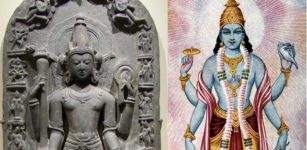 Vishnu: Supreme, Universal Hindu God Whose Avatars Reach Nations, Cultures And Races
Featured Stories | Jul 25, 2019
Vishnu: Supreme, Universal Hindu God Whose Avatars Reach Nations, Cultures And Races
Featured Stories | Jul 25, 2019 -
 When Giants Ruled North America – Giant Skeletons ‘Erased’ From History – Part 2
Ancient Mysteries | Nov 22, 2018
When Giants Ruled North America – Giant Skeletons ‘Erased’ From History – Part 2
Ancient Mysteries | Nov 22, 2018 -
 Mysterious Viking Burial Site Of Three Women In Norway Reveals Its Secrets
Vikings | Dec 26, 2024
Mysterious Viking Burial Site Of Three Women In Norway Reveals Its Secrets
Vikings | Dec 26, 2024 -
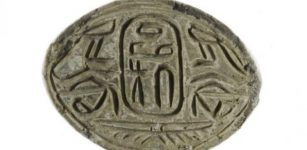 Hyksos: 15th Dynasty Rulers Of Ancient Egypt, Were An Internal Takeover
Archaeology | Jul 15, 2020
Hyksos: 15th Dynasty Rulers Of Ancient Egypt, Were An Internal Takeover
Archaeology | Jul 15, 2020 -
 Ancient Roman Coins Discovered In Utah Could Re-Write History But Are They Authentic?
Archaeology | Apr 23, 2019
Ancient Roman Coins Discovered In Utah Could Re-Write History But Are They Authentic?
Archaeology | Apr 23, 2019 -
 Oldest Preserved Remains Of Bed Bug Found In Paisley Caves, Oregon
Archaeology | Apr 7, 2017
Oldest Preserved Remains Of Bed Bug Found In Paisley Caves, Oregon
Archaeology | Apr 7, 2017 -
 How Did Sargon Become The Most Powerful Ruler Of Mesopotamia?
Featured Stories | Apr 3, 2020
How Did Sargon Become The Most Powerful Ruler Of Mesopotamia?
Featured Stories | Apr 3, 2020

